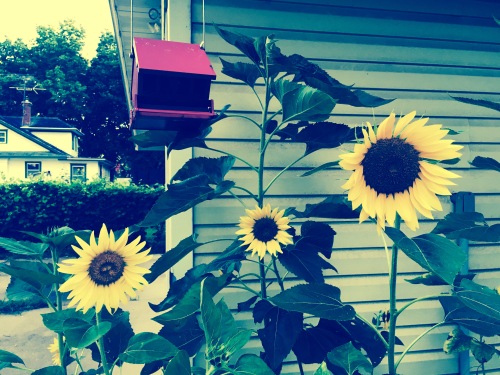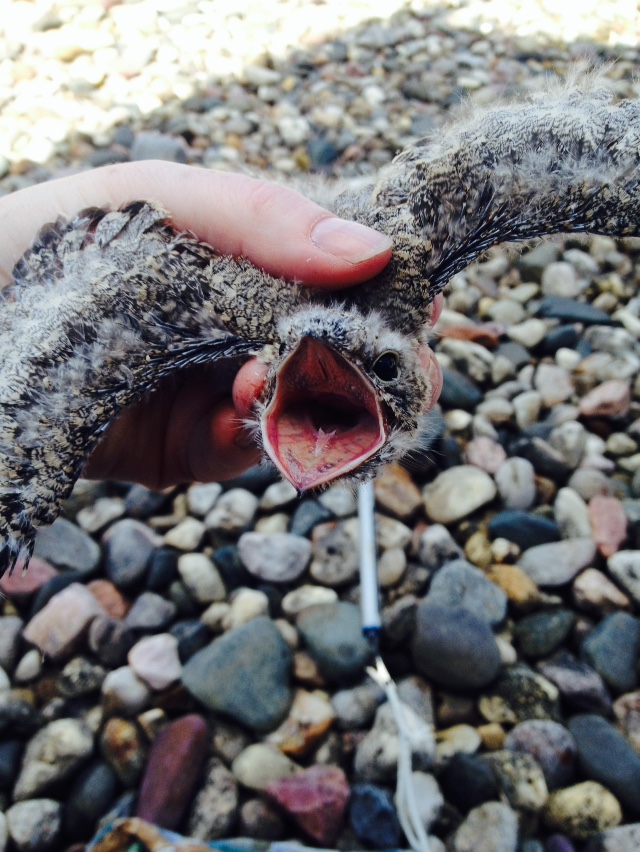How do we protect and attract backyard birds?

Feeders
- Install cage suet feeders horizontally with plastic tray pointed downward to prevent starlings and squirrels. Woodpeckers have specialized feet for hanging upside down.
- Conjunctivitis is an infectious disease spread by feeders and poses no threat to humans. Callouses develop on the eyes of birds and can lead to blindness and eventually starvation.
- Take down feeders for at least a month if you observe conjunctivitis so that the infected flock will disperse.
- Clean feeders 3-4 times/year with 10% bleach solution to prevent conjunctivitis that affects House Finches, American Goldfinches and other birds.
- Sweep under feeders and switch to single-seed type feed to reduce seed waste that can spread disease.
- To prevent squirrels from access to feeders, choose feeders that are squirrel resistant (on-line reviews are helpful in choosing), install a baffle or use a chain.

Nest Boxes
- Nest boxes can be installed to attract bluebirds, Great-Horned Owls, American Kestrels, Barn Swallows, Wood Ducks, Great Blue Herons, House Wrens, Mallards, Osprey, Northern Flickers, White Breasted Nuthatches, Tree Swallows and other species. A variety of plans for building nest boxes, predator prevention, nest cameras, bird species selection tools, management of paper wasps, strategies for installing nest boxes, and instructions for NestWatch participants can be found at the Cornell Lab of Ornithology web site.
- If Barn Swallow nest waste over doorways poses a health risk, discourage them by taping scented fabric softener/dryer sheets to the location of the nest site and replace weekly until the nesting pairs disperses. Nest boxes can be built to encourage barn swallows to nest elsewhere. Swallows are beneficial — a nesting swallow can consume its weight ( 17.0 to 10.7 grams; source: Birds of North America) in insects every day.

Free-Range Cats
- Billions of birds and many native at-risk mammals, amphibians and reptiles are killed by house cats every year.
- Behind habitat loss and windows, house cats are the greatest threat to wildlife in North America and other areas (Source: Sibley Guides to Birds). Cats are the cause of extinctions of many bird species worldwide.

- Consider taking your cat outdoors on a leash or keeping your cat indoors for their own health – save on vaccination expenses because your pet won’t be interacting with feral cats, other wild mammals, and other pathogens.
- For tips on how to deter feral and free-range cats from your yard: www.alleycat.org/deterrents

Mowing & Gardening
- To support insectivores and nectarivores, mow less often. Mowing twice a month (but not weekly or every 3 weeks) encourages flowering plants like clover that support bees and Sphinx Moths, but might also support insects that swallows, nighthawks, bats and other insectivores eat (Source: NSF Study from University of Mass).
- Consider planting purple cone flowers for nectarivores for greater backyard biodiversity and sunflowers for seed eaters like American Goldfinches.

Urban Bird Treaty Cities
- For more information on how to make your community better for birds, check out the US Fish & Wildlife Service Urban Bird Treaty site.



